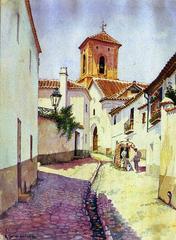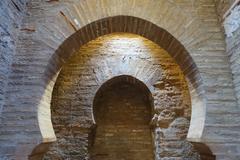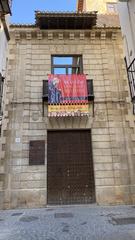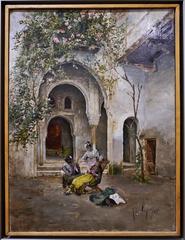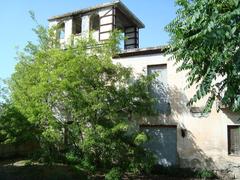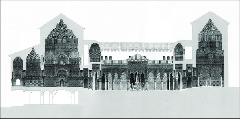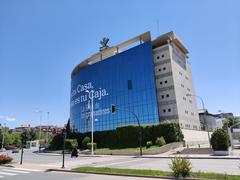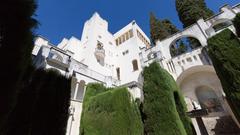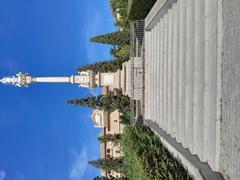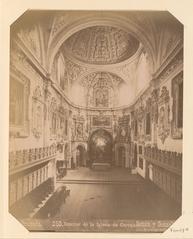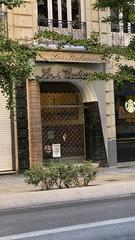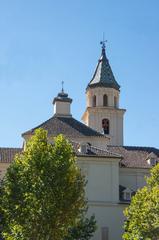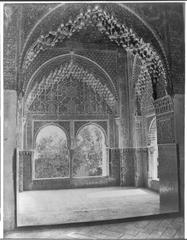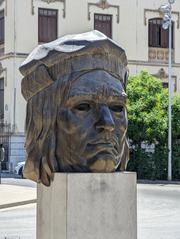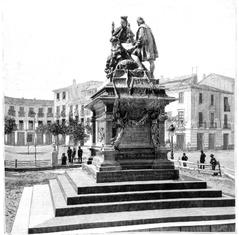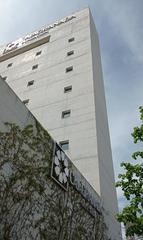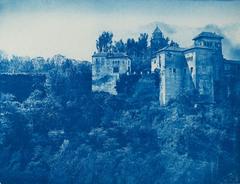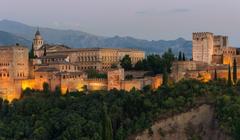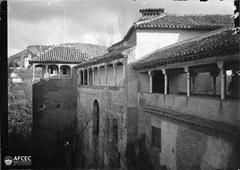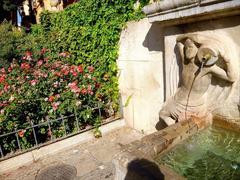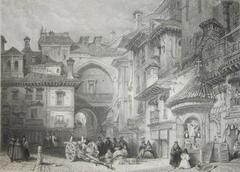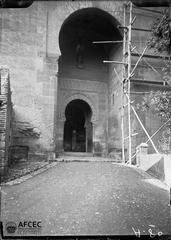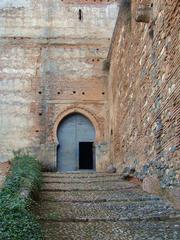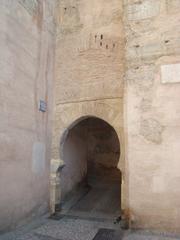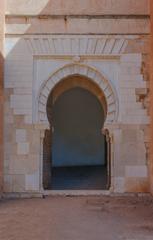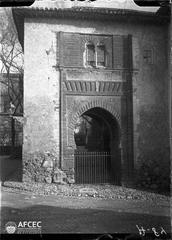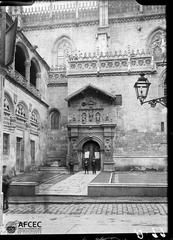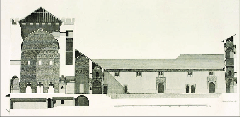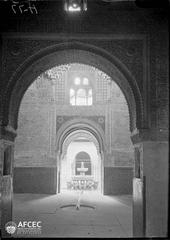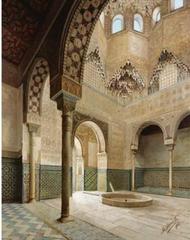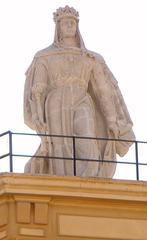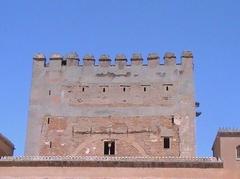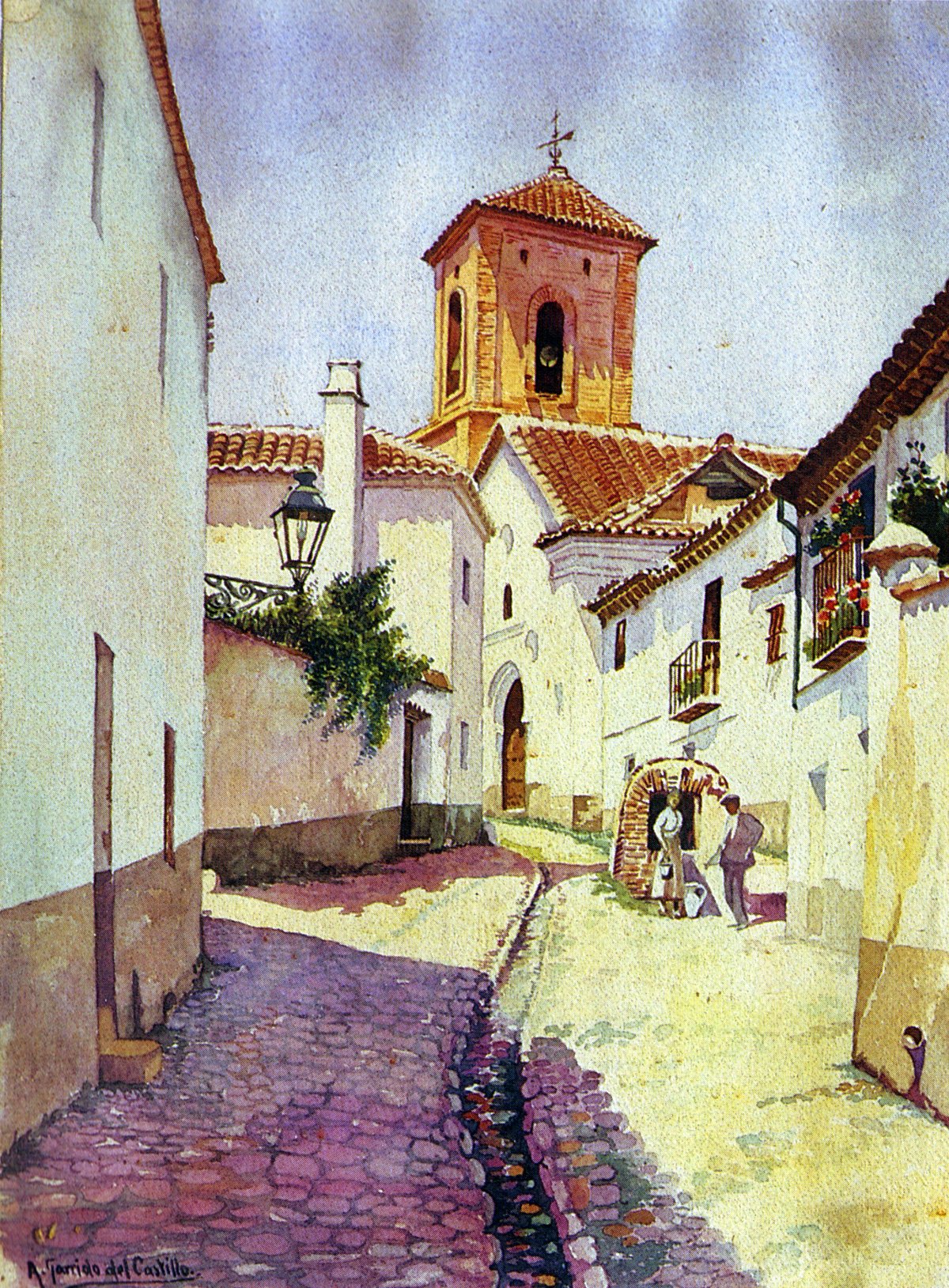
Church of San Luis Granada: Visiting Hours, Tickets, and Guide to Historical Sites
Date: 14/06/2025
Introduction
Located in the historic Albaicín quarter of Granada, Spain, the Church of San Luis stands as a compelling testament to the city’s rich, layered history. Built in the 16th century atop the foundations of a former mosque, this site embodies Granada’s transition from Islamic to Christian rule following the Reconquista. Although the original church suffered devastating destruction in the 20th century, its surviving walls, adjacent Nasrid-era cistern, and ongoing restoration efforts connect visitors to centuries of urban and religious transformation. This guide offers a comprehensive overview for those interested in the Church of San Luis’s history, architecture, restoration, visiting hours, ticketing, accessibility, and its role among Granada’s historical sites (Albaicín Granada, Legado Andalusí).
Table of Contents
- Historical Context and Foundations
- Construction, Decline, and Destruction
- Architectural Remains and Restoration
- Visitor Information: Hours, Tickets, and Accessibility
- Nearby Attractions and Local Insights
- Frequently Asked Questions (FAQ)
- Preservation Status and Community Efforts
- Visuals and Media
- Conclusion and Recommendations
- Sources
Historical Context and Foundations
Islamic Origins
Before the Christian conquest, the Albaicín was the heart of Muslim Granada. The site of the Church of San Luis originally hosted a mosque, typical of the area’s dense concentration of Islamic-era monuments (Legado Andalusí). These mosques served as religious and social hubs, featuring prayer halls, courtyards, and possibly minarets.
Christian Transformation
After Granada’s conquest in 1492, the Catholic Monarchs began a systematic transformation, converting or replacing mosques with Christian churches (Granada.info). The construction of the Church of San Luis in the 16th century atop the foundations of the old mosque symbolized the new religious order and urban reorganization (Albaicín Granada).
Construction, Decline, and Destruction
Architectural Features
The Church of San Luis blended Gothic, Renaissance, and Mudejar styles. Its design featured a rectangular nave, brickwork, and a wooden roof—elements reflecting both local tradition and Islamic artistic influence (Wikipedia: Albaicín). The 18th-century addition of a Baroque tower introduced further stylistic layering.
Community Role
As a parish church, San Luis was a focal point for the Christian community, hosting masses, sacraments, and gatherings. The expulsion of Moriscos in the late 16th and 17th centuries led to demographic shifts, and churches like San Luis became symbols of the new social and religious order (Legado Andalusí).
20th-Century Catastrophe
In December 1933, anti-clerical riots resulted in the church being set ablaze, destroying its interior and nearly all artistic treasures (Rincones de Granada). Only the exterior walls, bell tower, and sacristan’s house survived, leaving the structure a ruin. The remaining statue of San Luis was preserved in the Cathedral Museum (Change.org).
Architectural Remains and Restoration
Current State
Today, the Church of San Luis stands as a haunting ruin. Its outer walls and bell tower remain visible, while the Nasrid-era cistern nearby underscores the site’s Islamic heritage (Albaicín Granada). The building is included in Spain’s “Lista Roja del Patrimonio,” indicating severe risk of disappearance if restoration is not undertaken (Lista Roja Patrimonio).
Restoration Efforts
Since 2006, the site has been owned by the city of Granada. In December 2021, funding from the European Union’s Next Generation program was secured to restore the church, with plans to convert it into a cultural center (Albaicín Granada). As of June 2025, no comprehensive restoration has begun, but community and institutional advocacy continues (Change.org).
Visitor Information: Hours, Tickets, and Accessibility
Visiting Hours
- Exterior Viewing: The church can be viewed from the street at any time, as it is not currently open as a managed tourist attraction.
- Interior Access: Not permitted due to safety risks and ongoing disrepair.
Tickets and Admission
- Entrance Fee: Free, as the site is not formally open to visitors.
- Guided Tours: Not officially available, though some Albaicín walking tours may stop nearby.
Accessibility
- The site is located on a public street in the Albaicín. The terrain is steep and cobbled, so sturdy footwear is recommended. The structure itself is inaccessible due to safety concerns.
Nearby Attractions and Local Insights
The Church of San Luis is ideally situated for those exploring the Albaicín’s atmospheric streets. Nearby points of interest include:
- Mirador de San Nicolás: Famed for panoramic views of the Alhambra and Sierra Nevada.
- Puerta de Fajalauza: A medieval gate near the church.
- Traditional Cármenes: Walled houses with gardens unique to the Albaicín.
The neighborhood’s rich blend of Islamic and Christian heritage is evident throughout, from the remnants of old mosques to Renaissance and Baroque churches.
Frequently Asked Questions (FAQ)
Q: What are the visiting hours for the Church of San Luis?
A: The church is accessible for exterior viewing at any time. There are no official hours or interior visits.
Q: Is there an entrance fee or are tickets required?
A: No. The site is free to view from the outside.
Q: Can I enter the ruins?
A: No. Entry is prohibited due to safety concerns.
Q: How do I get there?
A: The site is on Calle San Luis, Albaicín, near Puerta de Fajalauza. It is walkable from central Granada, but be prepared for hilly terrain.
Q: Are guided tours available?
A: No official tours, but some neighborhood walking tours may pass nearby.
Preservation Status and Community Efforts
The Church of San Luis’s inclusion on the “Lista Roja del Patrimonio” underscores the urgency of restoration (Lista Roja Patrimonio). Local advocacy, including petitions (Change.org), calls for the site’s rescue and adaptive reuse, envisioning it as a cultural center and a revitalized community space.
Visuals and Media
- Images: Photographs of the surviving walls, bell tower, and the atmospheric Albaicín streets.
- Maps: Location maps showing proximity to other heritage sites.
- Virtual Tours: Check local tourism websites for updated media resources.
Conclusion and Recommendations
The Church of San Luis is a powerful emblem of Granada’s complex past, combining Islamic foundations, Christian transformation, and the scars of modern conflict. While currently in ruins, it offers an evocative stop for visitors exploring the Albaicín, and stands as a call to action for heritage preservation. Restoration efforts supported by European funding may soon breathe new life into this landmark, transforming it into a vibrant cultural space. For updates, practical information, and to support restoration initiatives, consult official tourism channels and local advocacy groups.
Sources and Further Reading
- Restoration of the Church of San Luis – Albaicín Granada
- The Vanished Arab Monuments of Granada – Legado Andalusí
- History of Granada – Granada.info
- Albaicín (Granada) – Wikipedia
- Iglesia de San Luis – Rincones de Granada
- Red List of Heritage – Lista Roja Patrimonio
- Change.org Petition for Restoration
For more information on Granada’s historical sites and restoration efforts, visit Granada tourism website and Albaicín Granada restoration project.
